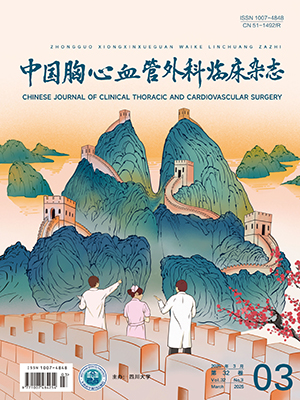| 1. |
Picchi SG, Lassandro G, Bianco A, et al. RFA of primary and metastatic lung tumors: Long-term results. Med Oncol, 2020, 37(5): 35.
|
| 2. |
Li M, Qin Y, Mei A, et al. Effectiveness of radiofrequency ablation therapy for patients with unresected stageⅠA non-small cell lung cancer. J Cancer Res Ther, 2020, 16(5): 1007-1013.
|
| 3. |
Yuan Z, Wang Y, Zhang J, et al. A meta-analysis of clinical outcomes after radiofrequency ablation and microwave ablation for lung cancer and pulmonary metastases. J Am Coll Radiol, 2019, 16(3): 302-314.
|
| 4. |
刘宝东, 叶欣, 范卫君, 等. 影像引导射频消融治疗肺部肿瘤专家共识(2018年版). 中国肺癌杂志, 2018, 21(2): 76-88.
|
| 5. |
Nour-Eldin NE, Naguib NN, Mack M, et al. Pulmonary hemorrhage complicating radiofrequency ablation, from mild hemoptysis to life-threatening pattern. Eur Radiol, 2011, 21(1): 197-204.
|
| 6. |
Quirk MT, Lee S, Murali N, et al. Alternatives to surgery for early-stage non-small cell lung cancer: Thermal ablation. Clin Chest Med, 2020, 41(2): 197-210.
|
| 7. |
Gao Y, Chen J, Zhang J, et al. Radiofrequency ablation of primary non-small cell lung cancer: A retrospective study on 108 patients. J Buon. 2019, 24(4): 1610-1618.
|
| 8. |
Prud'homme C, Deschamps F, Moulin B, et al. Image-guided lung metastasis ablation: A literature review. Int J Hyperthermia, 2019, 36(2): 37-45.
|
| 9. |
Kim MS, Hong HP, Ham SY, et al. Complications after 100 sessions of cone-beam computed tomography-guided lung radiofrequency ablation: A single-center, retrospective experience. Int J Hyperthermia, 2020, 37(1): 763-771.
|
| 10. |
Zhou X, Li H, Qiao Q, et al. CT-guided percutaneous minimally invasive radiofrequency ablation for the relief of cancer related pain from metastatic non-small cell lung cancer patients: A retrospective study. Ann Palliat Med, 2021, 10(2): 1494-1502.
|
| 11. |
Hiraki T, Tajiri N, Mimura H, et al. Pneumothorax, pleural effusion, and chest tube placement after radiofrequency ablation of lung tumors: Incidence and risk factors. Radiology, 2006, 241(1): 275-283.
|
| 12. |
Kennedy SA, Milovanovic L, Dao D, et al. Risk factors for pneumothorax complicating radiofrequency ablation for lung malignancy: A systematic review and meta-analysis. J Vasc Interv Radiol, 2014, 25(11): 1671-1681.
|
| 13. |
Streitparth T, Schumacher D, Damm R, et al. Percutaneous radiofrequency ablation in the treatment of pulmonary malignancies: Efficacy, safety and predictive factors. Oncotarget, 2018, 9(14): 11722-11733.
|
| 14. |
Jiang B, Mcclure MA, Chen T, et al. Efficacy and safety of thermal ablation of lung malignancies: A Network meta-analysis. Ann Thorac Med, 2018, 13(4): 243-250.
|
| 15. |
Lencioni R, Crocetti L, Cioni R, et al. Radiofrequency ablation of lung malignancies: Where do we stand? Cardiovasc Intervent Radiol. 2004, 27(6): 581-590.
|
| 16. |
Ogawa E, Fukuse T, Toda Y, et al. Effects and risks of radiofrequency ablation on the pulmonary tissue and vascular system: A preliminary histological study. Surg Today, 2008, 38(5): 425-431.
|
| 17. |
Hiraki T, Gobara H, Shibamoto K, et al. Technique for creation of artificial pneumothorax for pain relief during radiofrequency ablation of peripheral lung tumors: Report of seven cases. J Vasc Interv Radiol. 2011, 22(4): 503-506.
|
| 18. |
Lee EW, Suh RD, Zeidler MR, et al. Radiofrequency ablation of subpleural lung malignancy: Reduced pain using an artificially created pneumothorax. Cardiovasc Intervent Radiol, 2009, 32(4): 833-836.
|




